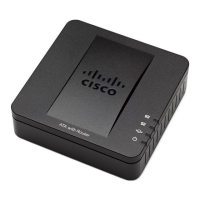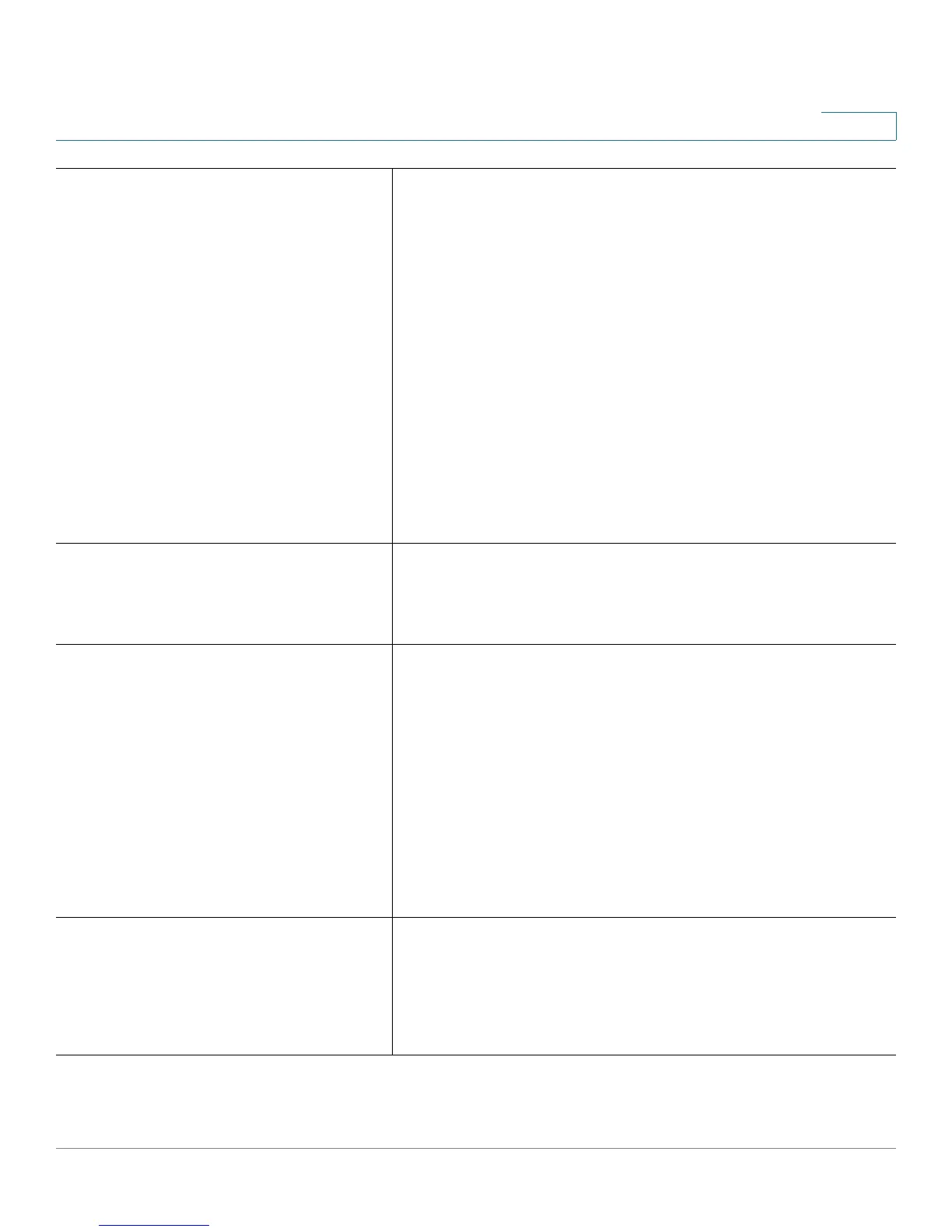Voice Parameters
Provisioning Guide for Cisco SPA100 and SPA200 Series Analog Telephone Adapters 113
6
<Secure_Call_Setting_1_>
<Secure_Call_Setting_2_>
If yes, all outbound calls are secure calls by default, without
requiring the user to dial a star code first.
Default setting: no
• If Secure Call Setting is set to yes, all outbound calls
are secure. However, a user can disable security for a
call by dialing *19 before dialing the target number.
• If Secure Call Setting is set to No, the user can make a
secure outbound call by dialing *18 before dialing the
target number.
• A user cannot force inbound calls to be secure or not
secure; that depends on whether the caller has
security enabled or not.
Note: This setting is applicable only if Secure Call Serv is set
to yes on the line interface.
<Message_Waiting_1_>
<Message_Waiting_2_>
Setting this value to yes can activate stutter tone and VMWI
signal. This parameter is stored in long term memory and will
survive after reboot or power cycle.
Default setting: no
<Accept_Media_Loopback_Request_1_>
<Accept_Media_Loopback_Request_2_>
<Accept_Media_Loopback_Request_5_
> through
<Accept_Media_Loopback_Request_13_>
Controls how to handle incoming requests for loopback
operation.
Default setting: automatic
• never: Never accepts loopback calls; replies 486 to the
caller.
• automatic: Automatically accepts the call without
ringing.
• manual: Rings the phone first, and the call must be
picked up manually before loopback starts.
Default setting: Automatic
<Media_Loopback_Mode_1_>
<Media_Loopback_Mode_2_>
<Media_Loopback_Mode_5_> through
<Media_Loopback_Mode_13_>
The loopback mode to assume locally when making call to
request media loopback. Choices are: Source and Mirror.
Default setting: source
NOTE If the ATA answers the call, the mode is determined by
the caller.

